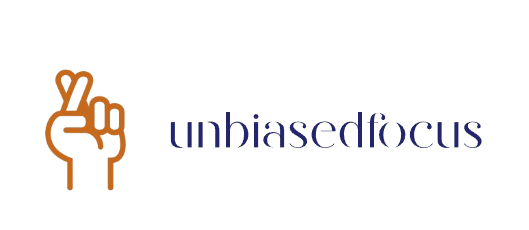In a world where everyone’s trying to climb the corporate ladder, having a solid personal leadership development plan is like having a GPS in a maze. It keeps you on track, helps you dodge dead ends, and ensures you don’t end up in the break room wondering where it all went wrong. Whether you’re a seasoned executive or a fresh-faced intern, a well-crafted plan can turn your aspirations into achievements.
Understanding Personal Leadership Development Plans
Personal leadership development plans serve as essential tools for career advancement. They provide clarity and direction, enabling individuals to articulate their leadership goals and strategies.
Importance of Personal Leadership Development
Personal leadership development enhances self-awareness and personal growth. It fosters essential skills required for effective leadership. Individuals who actively engage in this process often experience improved decision-making abilities. They also cultivate resilience in the face of challenges. Organizations benefit from employees who invest in their development, as this contributes to a more productive and harmonious workplace.
Key Components of a Development Plan
Key components of a development plan include clear objectives that focus on specific leadership skills. Regular feedback mechanisms provide ongoing evaluation and support. Short-term and long-term goals create a roadmap for continuous improvement. Identifying resources, such as mentors and training programs, ensures access to guidance. Lastly, tracking progress allows individuals to measure growth and adjust strategies accordingly.
Examples of Personal Leadership Development Plans

Personal leadership development plans vary based on career stage and individual needs. Below are specific examples that cater to different roles.
Plan for Emerging Leaders
Emerging leaders focus on building foundational leadership skills. Critical objectives include developing effective communication and emotional intelligence. Participation in mentorship programs provides crucial insights and support. Courses on conflict resolution and team dynamics enhance practical experience. Regular self-assessments track progress and highlight areas for improvement. Networking opportunities offer chances to connect with established leaders, fostering growth.
Plan for Mid-Level Managers
Mid-level managers require plans that emphasize strategic thinking and team management. Setting goals for delegation and decision-making skills plays a vital role. Engaging in cross-functional projects sharpens collaboration abilities. Regular feedback sessions from supervisors help identify strengths and weaknesses. Leadership training that focuses on conflict management can further elevate their skills. Utilization of peer feedback provides additional perspectives to enhance development.
Plan for Senior Executives
Senior executives benefit from plans centered on visionary leadership and organizational influence. Objectives often include enhancing stakeholder engagement and strategic alignment. Participation in executive coaching sessions promotes personal insight and accountability. Fostering a culture of innovation within their teams remains critical for success. Continuous learning through industry conferences keeps them informed of emerging trends. Evaluation of organizational effectiveness provides insights for future improvements.
Techniques for Creating an Effective Plan
Creating an effective personal leadership development plan involves a series of strategic techniques. These techniques facilitate the transformation of broad ambitions into actionable steps.
Setting Achievable Goals
Setting achievable goals requires specificity and clarity. Individuals should identify primary leadership competencies, such as decision-making or team motivation, and articulate related objectives. It’s essential to use the SMART criteria—specific, measurable, attainable, relevant, and time-bound—to create goals that truly resonate. For example, instead of stating a general aim of becoming a better leader, one could aim to increase team engagement scores by 20% within six months. Personal reflection and feedback from mentors often enhance the goal-setting process, ensuring each objective aligns with broader career aspirations.
Measuring Progress and Success
Measuring progress and success incorporates both qualitative and quantitative metrics. Tracking performance can involve regular self-assessments, feedback from peers, and observable changes in leadership effectiveness. Establishing a timeline enables individuals to assess their growth against initial goals. For instance, conducting quarterly reviews can reveal strengths and areas needing improvement, facilitating timely adjustments. Celebrating small victories keeps motivation high and reinforces commitment to the development plan. Documented reflections and progress reports can serve as valuable tools for ongoing evaluation and future planning.
Common Challenges in Leadership Development
Leadership development often encounters various challenges that hinder progress. Recognizing these obstacles can enhance the effectiveness of personal leadership plans.
Overcoming Self-Doubt
Self-doubt frequently undermines confidence in leadership abilities. Individuals may question their decisions or leadership styles. Acknowledging this uncertainty is crucial for growth. Engaging in self-reflection and seeking feedback from trusted colleagues fosters awareness. Peer support can also build resilience, enabling leaders to confront insecurities. Establishing a habit of documenting achievements creates a tangible sense of progress, paving the way for greater confidence in future endeavors.
Balancing Professional and Personal Growth
Striking a balance between professional and personal growth presents a common challenge. Time constraints often limit opportunities for self-improvement. Prioritizing both areas ensures well-rounded development. Allocating specific time slots for professional training alongside personal interests helps maintain this balance. Developing a support network enhances accountability, motivating individuals to pursue both goals actively. Identifying overlapping skills between personal and professional interests can create synergies, leading to more effective growth strategies overall.
Conclusion
A personal leadership development plan is a powerful tool for anyone looking to enhance their career and leadership abilities. By setting clear goals and identifying resources for growth individuals can navigate their professional journeys with confidence.
These plans not only foster personal growth but also contribute to the overall success of organizations. Whether one is just starting out or is a seasoned executive the right plan can make all the difference in achieving leadership aspirations.
Embracing the process of continuous improvement and self-reflection ensures that individuals remain adaptable and resilient in an ever-changing landscape. With commitment and the right strategies in place anyone can unlock their full leadership potential.

